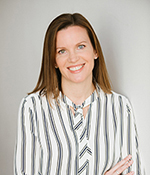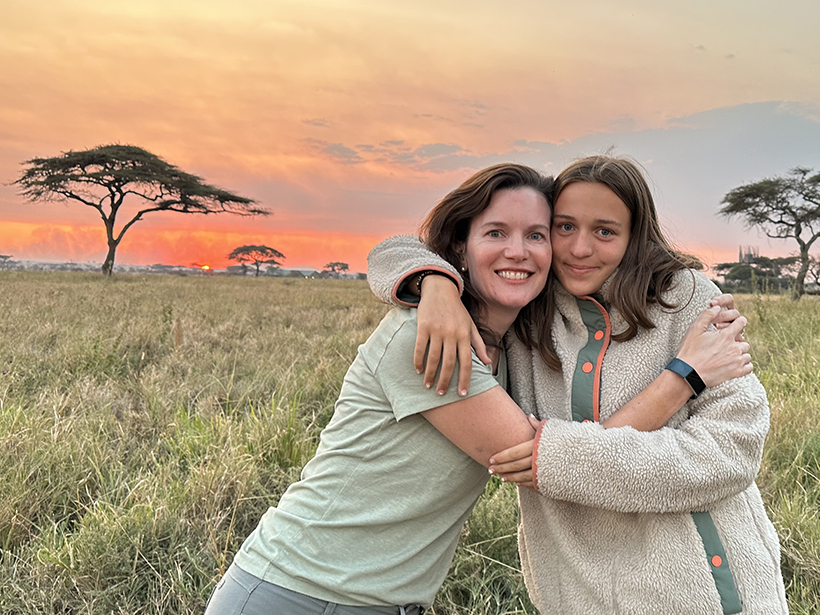
One day, Maddie was a fun-loving, athletic 14-year-old picking out a blue polka-dot dress for her eighth-grade graduation and looking forward to a carefree summer of swimming and playing volleyball. The next day, our lives were upended. The lump in Maddie’s arm, which we had been told repeatedly was “nothing to worry about,” turned out to be something to worry about after all. The pathology revealed it to be a low-grade fibromyxoid sarcoma, and we were launched into a world of doctor’s appointments, scans, uncertainty, and anxiety.
As devastating as the diagnosis was, as a physician, I at least felt like I was well positioned to ensure Maddie got the best care possible. I had access to a network of expert physicians and knew my way around PubMed. However, I quickly realized that we were essentially operating in a data-free zone. Like many sarcomas, low-grade fibromyxoid sarcoma is exceedingly rare. Published data were limited to case reports and single-center case series that were tiny despite being collected over decades.
Because of the lack of data, the surgeons we consulted at top sarcoma centers had divergent recommendations about how wide a margin was necessary to give Maddie the best chance of cure. Although the difference in a centimeter or two of margin may not seem like much, it had potentially big implications for quality of life in a thin 14-year-old, with a more extensive surgery possibly requiring a flap reconstruction and risking some loss of function in her dominant arm. We spent sleepless nights agonizing over the right path; too small a surgery could put her at risk for recurrence, but too large a surgery could unnecessarily leave her with a disability or (importantly to Maddie) unable to continue to play competitive volleyball. I read and reread every case report and case series and talked to more experts trying to find the “right” answer, only to realize that one did not exist. We decided to go with the more aggressive approach, not because there were clear data to support it, but because it seemed like the path of least regrets.
Sarcoma is a rare cancer, accounting for only about 1 percent of new cancers diagnosed each year. There are more than 70 different subtypes of sarcoma, each with its own pathology and natural history, which means that many subtypes are vanishingly rare. Low-grade fibromyxoid sarcoma, for example, makes up less than 1 percent of soft-tissue sarcomas and, therefore, less than 0.01 percent of all cancers.
Given the low overall prevalence and diversity of subtypes, the only way to obtain good data on prognosis and treatment outcomes in sarcoma is through a large, multicenter registry. Our own experience made this frustratingly clear, so we were thrilled to learn that AAOS had recently launched such an effort with its Musculoskeletal Tumor Registry (MsTR).
The MsTR has tremendous potential to improve the lives of future sarcoma patients. It will provide increased clarity on prognoses, as well as the relative risks and benefits of different treatment options. And it will eventually lead to improved survival rates and quality of life. Even before it yields clinical results, it is providing comfort and hope to families like mine. Sarcoma is sometimes referred to as the “forgotten cancer” because of the lack of attention and resources to it. Given this, it is very reassuring to know that AAOS recognizes these knowledge gaps and that smart people are dedicating their time, effort, and resources to close them. It is also empowering for current patients to feel that they can contribute to the body of knowledge, reducing uncertainty and improving outcomes for future patients.
Registries can be successful only if data are contributed to them. The more data that are contributed, the sooner a registry can start to yield meaningful results. I strongly encourage all sarcoma centers and individual surgeons treating sarcoma patients to participate in and contribute data to the MsTR. I understand the demands of a busy clinical practice and how daunting it can be to add yet another task to the workflow. To try to minimize the burden, the MsTR has worked hard to streamline data collection through branched logic and electronic health record integration. It also offers American Board of Orthopaedic Surgery Maintenance of Certification credits and the ability to reuse registry data for quality-improvement initiatives and payer incentive programs. The participation of as many surgeons as possible is vital to maximize the impact of the MsTR and its benefits to sarcoma patients.
It has been 3 years since Maddie’s diagnosis, and we are cautiously optimistic that her surgery was curative. Despite choosing the more aggressive surgical approach, thanks to talented orthopaedic and plastic surgeons, she has also maintained full function of her arm. Maddie is now an active high school student and three-sport varsity athlete. The only residual evidence of the sarcoma is a long, lightning bolt–shaped scar and the anxiety she develops leading up to her surveillance scans.
I am thankful every day that Maddie is healthy and thriving, and I know how lucky we are. Many sarcoma patients face much more arduous treatments and have much less happy outcomes.
I am also thankful for the hope that the MsTR provides. I know that the advances in sarcoma research and patient care it will bring will allow more sarcoma patients to look forward to bright futures.
Based on our experience, here are my recommendations if you are concerned about a mass or have been diagnosed with a sarcoma:
- Trust your gut instinct if you are concerned about a mass. Bring it to the attention of your doctor and have it fully evaluated.
- Seek care at a high-volume sarcoma center if possible. Sarcomas centers offer experienced multidisciplinary teams, access to clinical trials, and improved outcomes.
Consider obtaining more than one opinion. Because of the rarity of some sarcomas, there is not always a clear best treatment path. Getting multiple opinions allows you to either confirm the best treatment or to understand the range of options.
- Connect with other sarcoma patients. Patient groups at your sarcoma center or national organizations, such as the Sarcoma Alliance, can be a valuable source of support and information.
- Advocate for your sarcoma center to participate in the MsTR, if they are not already.
Susan Blank, MD, is an endocrinologist and the founder of BEATDiabetes, a nonprofit that provides digital health programs to people with type 2 diabetes and prediabetes.

